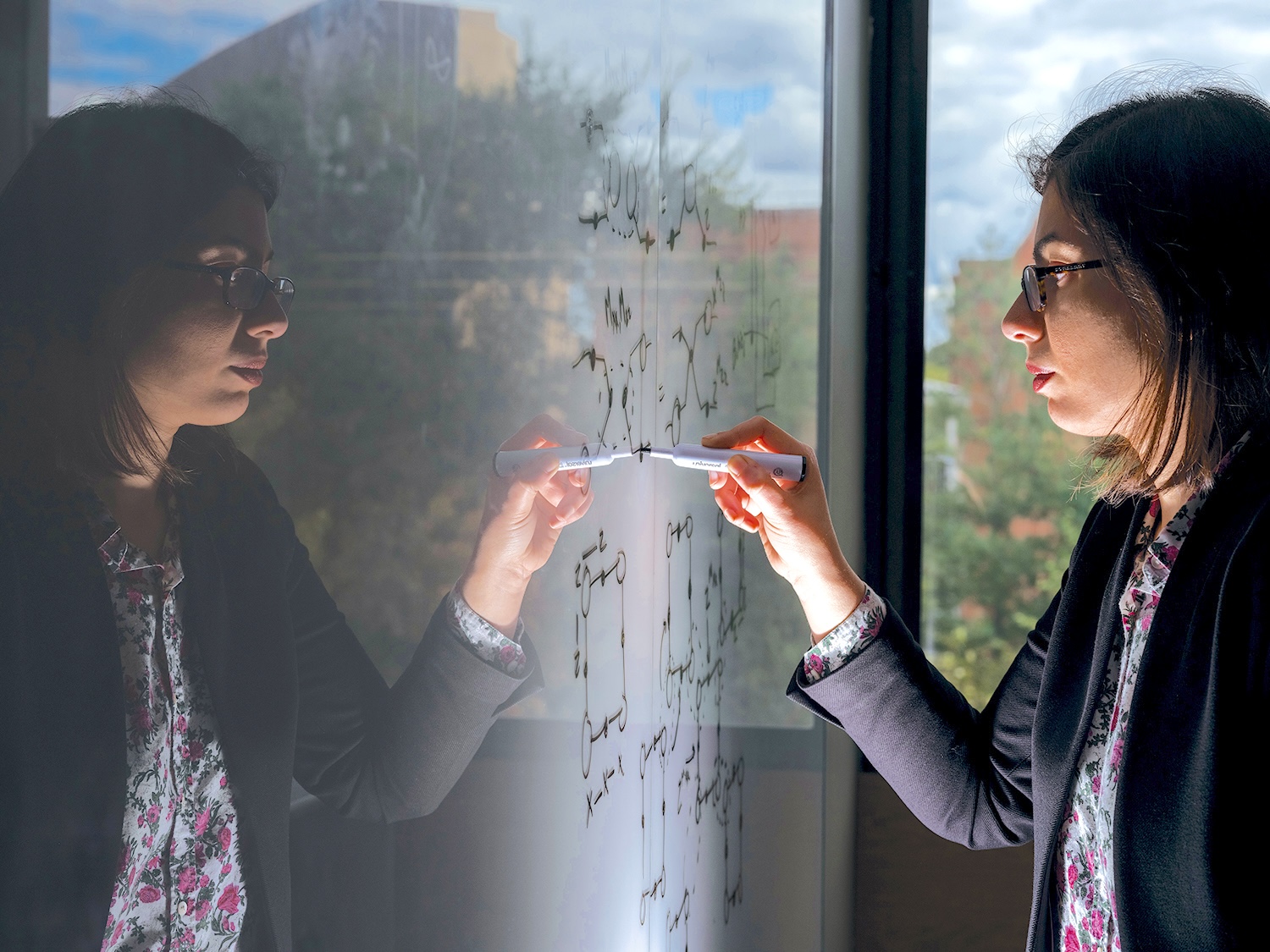
When she entered the field of quantum research, Shruti Puri was surprised by the division between those working on system architecture and those working on hardware. Because they were working separately, it meant that assumptions had to be made about what kind of errors could potentially happen — assumptions that aren’t always accurate. As a result, systems are often designed to protect against a broad range of potential errors — many of which very likely will never happen – leading to an inefficient use of the system’s resources.
Puri’s research is at the intersection of quantum optics — that is, how light interacts with matter — and quantum information theory. It’s a background that gives her a good understanding of the hardware physics and the actual noise in the system. And that provides a clearer picture of potential errors to anticipate and correct.
Because they’re so incredibly small, qubits — fragile bits of quantum information — are particularly susceptible to any perturbations in their environment. Electromagnetic fields, pressure changes and other disturbances — referred to as noise — can destroy the phenomena that make quantum computing so potentially powerful.
“The errors are quite large in the system, so you need to really think about how to optimize your error-correction code more than you do in the classical systems,” said Puri, assistant professor of applied physics at Yale University and senior investigator in the NSF Quantum Leap Challenge Institute for Robust Quantum Simulation, (RQS).
The eventual successful application of quantum technology, she said, will require efficient and active quantum error correction to protect the fragile quantum states. Puri is working toward this goal with a combination of robust quantum circuit engineering, tailoring error correction codes for specific noise models, and engineering qubits with inherent noise protection.
“For a long time, people would usually design codes to correct for noise in a quantum system, just assuming a general kind of noise model to describe the system,” she said. “But because I was coming from more of a hardware physics background, this was just bizarre to me. How can you make codes to correct noise when you don’t understand the noise that’s particularly affecting the hardware?”
Puri designs hardware in such a way that the noise is of a very specific nature, and easier to correct. Once the hardware has been tailored, she can design much more effective error-correcting codes. In 2020, Puri and her research group published a paper in Nature introducing a specific quantum element that enabled the realization of a tailored error-correcting code, which could perform much better than a general code. That helped revive interest within the field in the idea of tailoring a system for more effective error correction.
“Since then, we have identified other sorts of physical hardware where you can design other types of noise and then develop how to do error correction for that specific tailored noise,” she said.
—This story was originally published by Yale Engineering Magazine